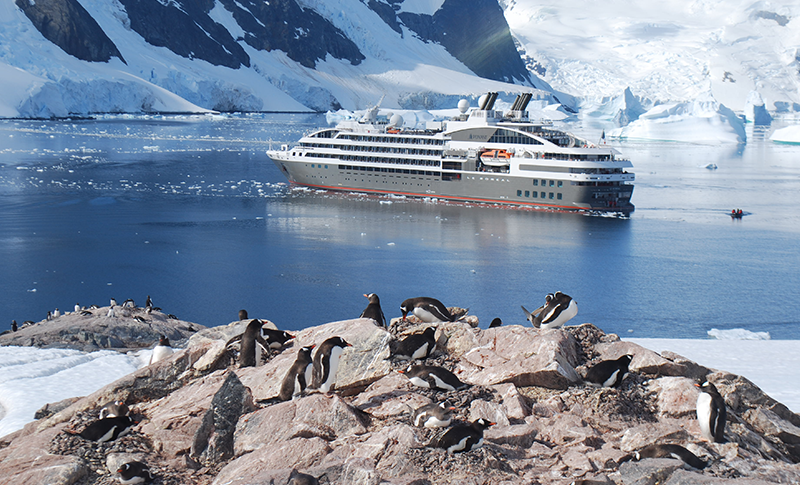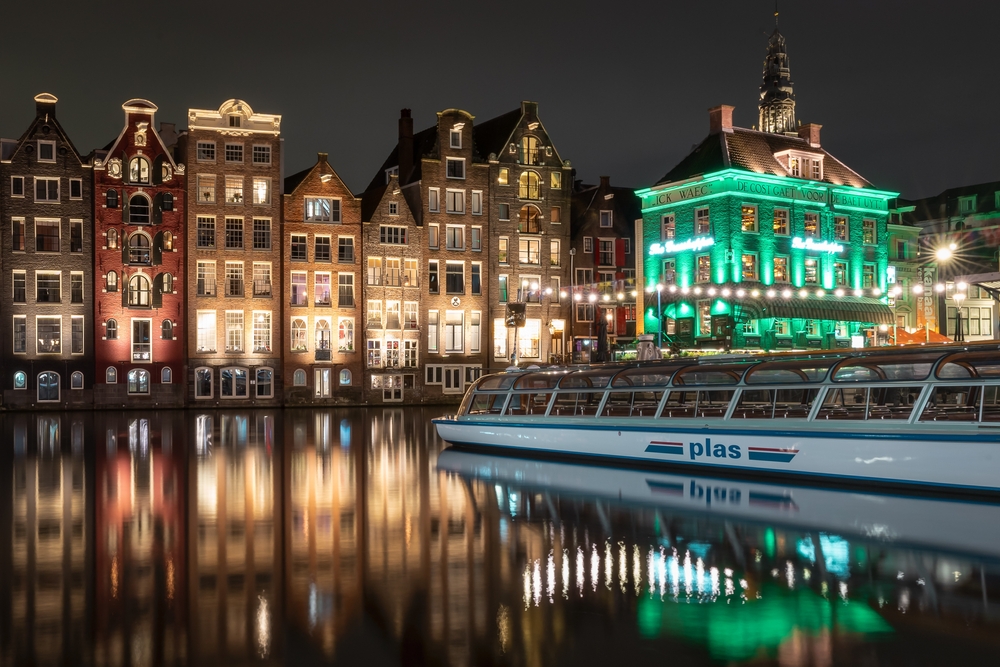Social scientists Machiel Lamers (Environmental Policy) and Nathalie Steins (Wageningen Marine Research) are studying sustainable tourism.
Lamers and Steins recently published an article on their work on the Scientific Expedition Edgeoya Svalbard (SEES). These expeditions to the Svalbard archipelago (previously known as Spitsbergen) consist of about 50 tourists and an equal number of scientists. Lamers went on the trip in 2015, Steins in 2022. Steins: ‘It’s an out-of-the-ordinary experience for the tourists and means 50 extra helpers for the scientists. In the article, we describe the pros and cons of collaboration in science cruises like these.’
Tourists have the feeling they’re helping to solve the world’s problems
Associate professor Lamers: ‘From a scientific perspective, combined trips like these offer a lot of opportunities. It’s ideal if you can collect data using ships that are sailing there anyway. But only if they’re going to places that are relevant for science. And that’s not usually the case with such ships.’
Tourist magnet
‘Over the past five to ten years, tourism and science have become increasingly intertwined in polar regions,’ explains Lamers. ‘That’s mainly because they happen to be the two most important activities in the polar regions. In these SEES trips to Svalbard, there were equal numbers of tourists and scientists. That’s unique, as tourists are usually in the majority.’
In addition to the practical aspect relating to the geography, valorization plays a role. Scientists are looking for ways of informing the general public about their research. Lamers: ‘Tourists on cruises to polar regions are more than ready to meet that need. Unconventional tourist trips are popular throughout the world. That makes Svalbard, with its icebergs, exceptional nature, remote areas and unusual fauna, a tourist magnet. A lot of cruise ships visit the Arctic and Antarctic. Not the floating giants, but these are still ships with a few hundred passengers on board. The fragile continent of Antarctica gets about 120,000 tourists a year and the numbers are growing exponentially.’
Tourism undoubtedly has an impact on vulnerable polar regions
Lamers sees a shift in the type of cruise that travel companies are selling. ‘Organizations want to offer an unusual experience that also includes educational aspects such as lectures. And they want smaller ships that can get closer to the nature. The guides on science cruises often have scientific backgrounds. They might help tourists spot birds, for example, from an observation post on the ship’s deck. That gives the tourists the feeling they’re helping to solve the world’s problems.’
Armed against polar bears
Lamers believes the combination of scientists and tourists offers advantages for both. ‘Sometimes it’s a question of quick wins; for example, when scientists suspend measuring instruments from a ship to measure the water quality. They can also use tourists as extra assistants to help move research equipment, or to collect waste found on beaches as part of a monitoring project.’
But the situation is often more complex. Expeditions differ and not all tourists are capable of carrying out complicated scientific tasks. People get in the way, or slow down procedures because they aren’t used to the effort involved. What is more, different rules and conditions apply to tourists compared with scientists. ‘Take insurance. Scientists are allowed to arm themselves against polar bears, and so are tourist guides, but not the tourists themselves. That means a guide always has to accompany a tourist who sets off with a scientist. Which in turn means that the guide can’t be somewhere else.’
Greenwashing
The desire to build up a ‘green’ reputation can be one reason why tour operators take scientists on board. Some say this is pure greenwashing: it legitimizes the growth in tourist trips to areas where the increasing human activity is problematic. ‘We are more nuanced,’ says Steins. ‘Such collaborations offer opportunities for research, provided certain conditions are satisfied. As a scientist, you want to carry out your measurements at a site that is relevant for science. That can conflict with the commercial interests of the operator if a ship has to be diverted as a result. If you follow tourist routes, you mainly end up in places that scientists already know a lot about. So you need to consider this aspect critically.’
As Lamers notes, there is a paradox here. ‘Tour organizations prefer to offer neutral scientific research with a certain appeal to tourists, such as spotting wild animals, but they don’t want to take detours or change their programme to accommodate that. Which means you are not studying the environment so much as the impact of tourism on the environment. It is also debatable whether tour operators are open to reflective science during the trips and any resulting criticisms.’
Known and protected
Should there be any tourism at all in such fragile areas? Steins: ‘That’s the irony: tourism undoubtedly has an impact on vulnerable polar regions. Cruise operators argue that tourism increases awareness of the need to protect these areas.’ Lamers: ‘It’s true you can only protect what you know. And it’s hard to prevent tourism, especially in Antarctica. That region is governed jointly by a group of countries, but the individual countries issue permits to national tour operators. That’s also something we’re studying because we want to know how best to design regulations that take this into account.’

 Machiel Lamers: ‘A lot of cruise ships visit the Arctic and Antarctic. Not the floating giants, but these are still ships with a few hundred passengers on board. The fragile continent of Antarctica gets about 120,000 tourists a year and the numbers are growing exponentially.’ Photo Machiel Lamers (2024)
Machiel Lamers: ‘A lot of cruise ships visit the Arctic and Antarctic. Not the floating giants, but these are still ships with a few hundred passengers on board. The fragile continent of Antarctica gets about 120,000 tourists a year and the numbers are growing exponentially.’ Photo Machiel Lamers (2024) 

